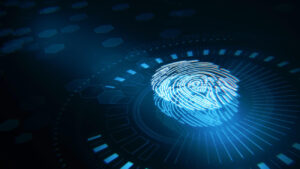Biometric authentication has become an increasingly common part of our daily lives stated Bahaa Abdul Hadi. From unlocking our smartphones to passing through airport security, biometrics like fingerprints and facial recognition are being used to verify our identities in more seamless and secure ways. However, the biometrics of the future will likely go far beyond these familiar modalities by incorporating additional physiological and behavioral factors into multi-modal systems.
The Limitations of Uni-Modal Biometric Systems
While fingerprints and facial recognition have proven to be relatively accurate and convenient authentication methods, they each have their limitations when used on their own. For example, fingerprints can be obscured by dirt, moisture or damage to the fingertip. Facial recognition struggles to identify people wearing glasses, hats or masks that cover part of their face. Uni-modal systems are also vulnerable to spoofing attacks using fake fingerprints or photographs.
Why Multi-Modal Biometrics Provide Better Security
By combining two or more biometrics modalities, multi-modal systems can overcome many of the vulnerabilities of uni-modal biometrics. For instance, a multi-modal system that uses both facial recognition and iris scanning would ensure that a photograph alone could not fool the system. Even if one modality is obscured or damaged, others remain to provide robust verification.
Multi-modal systems also drastically reduce the false rejection rate – instances where legitimate users are improperly rejected. Combining the matching scores from multiple biometrics provides better accuracy than any single biometric on its own.
Fingerprints and Facial Recognition: The Standard Multi-Modal Approach
Most existing multi-modal systems rely on fingerprints paired with facial recognition. This combination offers reasonably good security with the convenience of two very familiar and user-friendly modalities. Fingerprint scanners and facial recognition cameras have also become relatively inexpensive.
While certainly an improvement over uni-modal biometrics, fingerprints and facial recognition alone may not provide an adequate level of security for the most sensitive applications. Emerging multi-modal systems are incorporating additional physiological and behavioral factors to enhance accuracy further and prevent spoofing.
The Cutting Edge: Brainwaves, Heartbeats and Behavioral Biometrics
Brainwave Biometrics
Electroencephalography (EEG) sensors can be used to measure the electrical patterns of a person’s brainwaves. EEG brainwave patterns have been shown to be unique from person to person, even among identical twins. Authentication is based on matching the brainwave pattern of the current user to their enrolled pattern. EEG brainwave biometrics are very difficult to spoof since an attacker would essentially need to replicate the target’s distinct brain physiology.
Heartbeat Biometrics
Like EEG brainwaves, a person’s cardiac rhythm as measured by an electrocardiogram (ECG) is also unique. By placing ECG sensors against the skin, a heartbeat biometric system can identify users by matching their heart’s electrical signature. Since heartbeats cannot be faked, heartbeat authentication provides another highly secure biometric modality.
Behavioral Biometrics
Behaviors like gait recognition, keystroke dynamics, and voice recognition can also serve as modalities in multi-modal biometric systems. Gait recognition identifies people by the distinctive ways they walk, while keystroke dynamics match typing rhythm patterns. Voice recognition has also become much more advanced in recent years. Overall, the advantage of behavioral biometrics is providing continuous and passive authentication rather than one-time verification.
By intelligently combining biometric modalities like brainwaves, heartbeats, and behavior with the more standard fingerprints and facial recognition, multi-modal systems can achieve unprecedented levels of security with continuous and non-invasive user convenience. Though still an emerging field, multi-modal biometrics offers an exciting future for identity and access management. The blog has been authored by Bahaa Abdul Hadi and has been published by the editorial board of identity herald. For more information, please visit www.identityherald.com




